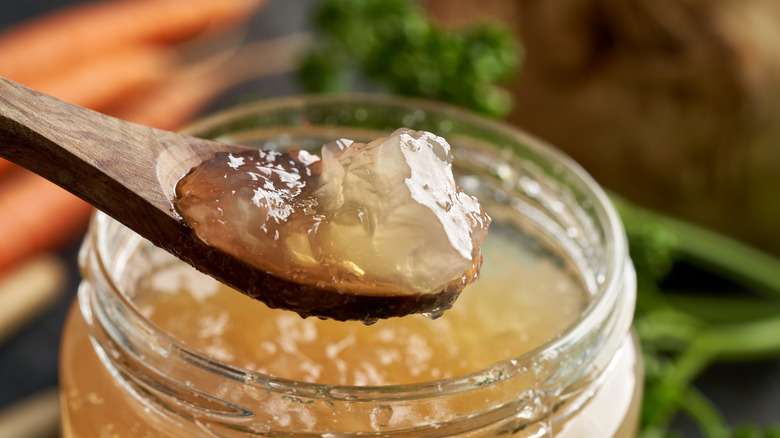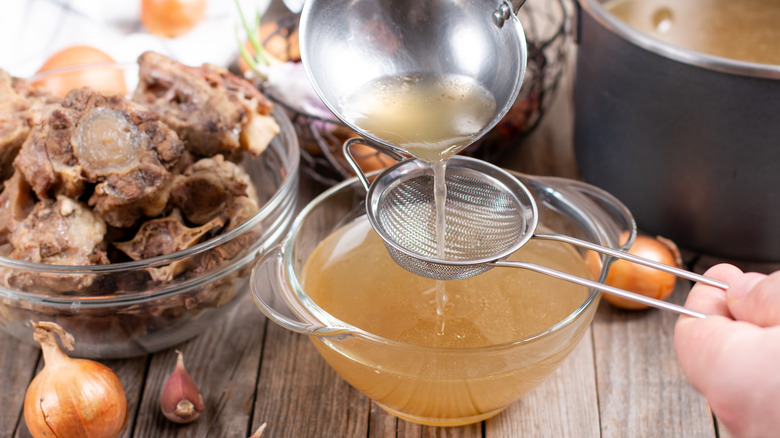The 'Pocket Soup' That Fueled 18th Century Sailors
Imagine you are stranded at sea with nothing to eat but the bouillon cube you kept in your pocket. Such was the case for sailors who had little real estate for food storage but needed sustenance for the sea voyage. However, these little morsels of flavor weren't actual bouillon cubes but "veal glew" (veal glue), portable soup, or pocket soup, as it was called in the 18th century, per Atlas Obscura. The earliest written records show that this portable soup was invented by the seafaring British in the late 1500s, but there is evidence of earlier versions of this ingredient around the globe.
Pocket soup was beef broth that had cooled into a gelatinous slab and had an intense umami flavor. Although it wasn't a substantial meal, it accompanied the great explorers of the 18th century under challenging circumstances. Atlas Obscura reports that pocket soup wasn't commercialized until the mid-18th century when Elizabeth Dubois found a way to market it as a form of nutrition for travelers at sea. Dubois's advertisements earned her a contract with the British Royal Navy, making pocket soup an essential item for sailors. By the turn of the next century, portable soup was so popular records show Meriweather Lewis purchased 200 pounds of it for his famous expedition across the U.S. with William Clark (via Discover Lewis & Clark).
How was 'pocket soup' made?
The first known recipe was discovered in Sir Hugh Plat's 16th century unpublished manuscripts (via Atlas Obscura). A recipe from Ann Shackleford's "The Modern Art of Cookery" stews calves feet, filet of veal, leg of mutton, and other parts of the animal over a gentle flame before straining the water. To the broth, Shackleford's adds egg whites and a hefty amount of salt, which turns the liquid into a rubbery glue. On the high seas, the slab would be added to a bit of boiling water to reliquefy it into a flavorful broth.
Essentially, pocket soup is the predecessor to the bouillon cubes we use today, though there are some differences between the two means to stock. The earliest form of bouillon cube was invented in the late 19th century by German chemist Justus von Liebig, using an extraction method for concentrating beef solids, according to Serious Eats. Modern bouillon cubes came a bit later, when a Swiss manufacturer used hydrolyzed vegetable protein to mimic the flavor of meat at a much lower cost (although they ended up adding beef extract later). So bouillon cubes were a cheap alternative to the original pocket soup. After all, it took hours to extract the real flavors and collagen from the veal meat and bones. Pocket soup is downright artisanal in comparison!

